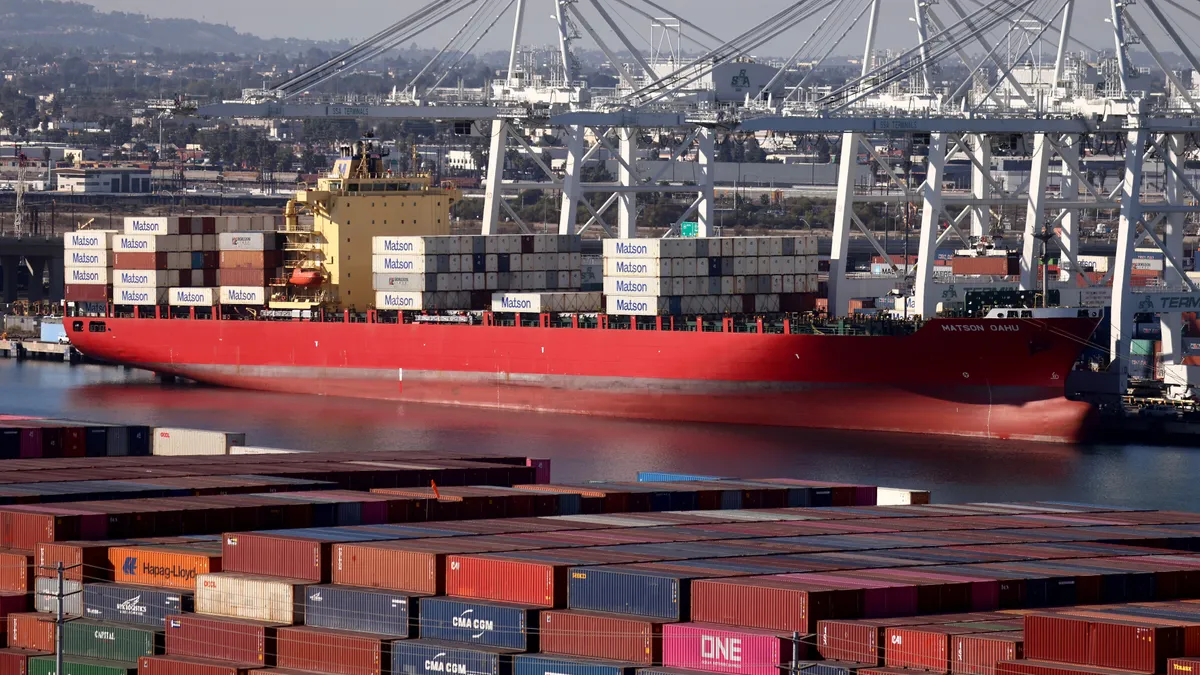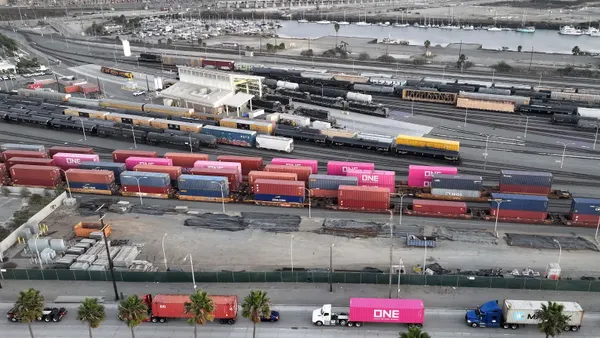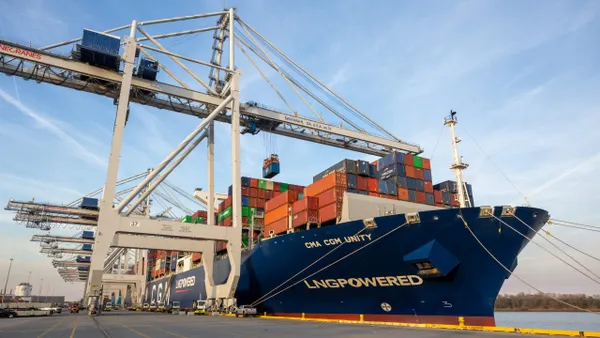Dive Brief:
- Ocean carriers plan to ramp up blank sailings to counteract softer demand and declining volumes.
- Maersk, Matson and Zim reported in Q3 earnings that they are prepared to reduce capacity in the face of lower demand. Maersk has already taken out around 15% of capacity from Pacific and Asia-Europe trade lanes, CEO Søren Skou said this month.
- Matson foresees challenges over the next two quarters for the Transpacific trade lane as more shippers divert cargo away from the West Coast, according to Chairman and CEO Matthew Cox. "We expect more reductions and scheduled changes to meet the lower demand levels," he said.
Dive Insight:
Demand has fallen significantly due to customers moving cargo away from the West Coast, Ali Ashraf, director of ocean product at C.H. Robinson told Supply Chain Dive in an email. Ashraf expects carriers to remove somewhere between 17% to 20% of capacity to the West Coast in Q4 to account for declining demand and lower rates.
It is typical for carriers to remove capacity following the peak retail season. This year, however, peak season took place over the summer as retailers ordered earlier to avoid delays. As a result, "it’s likely we’ll see more blank sailings at this time than in past years, especially compared to the past two years," Ashraf said.
Consulting firm Sea-Intelligence said in a Nov. 11 report, “The number of blank sailings have been ramped up drastically on the Transpacific.” Carriers added 34 blank sailings on Asia-North America West Coast, and 16 on Asia-North America East Coast.
Demand is a major factor in how ocean carriers allocate capacity.
It is cheaper for an ocean carrier to sail a ship at 100% capacity than it is so sail it at anything less. "We would never sail two ships with 50%, but would always sail one ship with 100% because we simply can take out a tremendous amount of cost," Hapag-Lloyd CEO Rolf Habben Jansen said on the company's Q3 earnings call.















